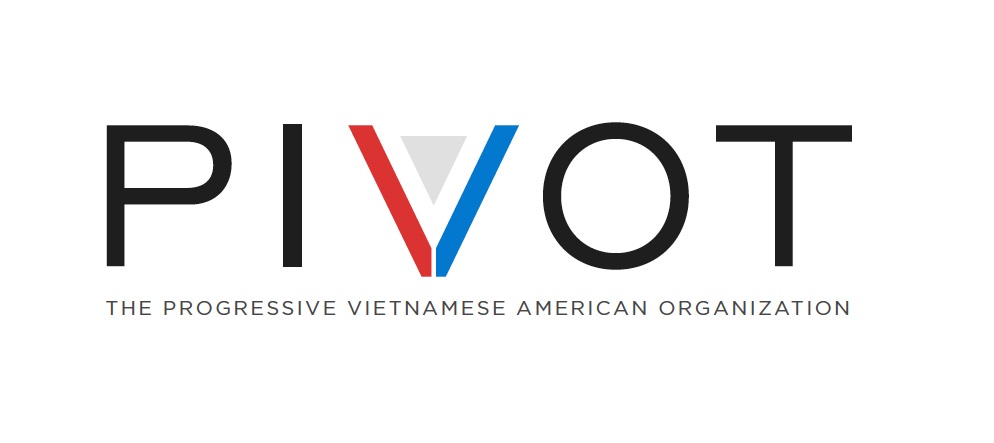Of Pandemics, Policies, and Police
/June 5, 2020
Tung Nguyen, PIVOT president
Health disparities researchers have known for several decades the main underlying causes of such disparities. We call them the social determinants of health, and they include poverty, education, the environment, and healthcare access.
Racism is often thought to be one of those determinants as well, because chronic exposure to racism causes the body to change through the release of stress hormones and neurotransmitters. Acute exposure to racism can lead to death, as in the case of the recent killings of George Floyd, Breona Taylor, Ahmaud Arbery, and others. From a health disparities perspective, the George Floyd shooting was an acute exposure to racism, with the 4 police officers serving as the vectors that delivered the disease of racism and its ultimate health outcome, death.
But racism also underlie the other social determinants of health, because racial/ethnic minorities, and specifically Black Americans, also suffer more from income inequalities, educational disparities, and environmental degradation. Thus, we consider racism to be even more fundamental than a social determinant. It is a structural determinant.
From the viewpoint of the health disparities researcher, there is not much new about the COVID-19 pandemic except the novel coronavirus. The pandemic has had two major effects besides the obvious health and economic ones.
First, it stressed severely all of our dysfunctional systems—health, economic, legal, political---to their limits and broke them. We can no longer pretend that they are good enough. They were never good enough except for those of us who enjoyed privilege. That is the second major effect. It ripped down the so-called color blinds from our eyes, so we can no longer pretend that we all benefit or suffer the same.
It has been distressing for us to find out that 1 out of 2000 Black Americans have died in the COVID pandemic and that their mortality rate is 2-3 times more than white people. But this was not surprising to health disparities researchers. After all, there is data that show even Black people in higher socio-economic levels have much shorter life expectancy than middle class whites before the pandemic. The fact is that most of us who are not directly affected hear the reports and then move on.
Nonetheless, the racial and ethnic disparities data from the pandemic have been revealing and important, both in opening our eyes and helping us make good policies. That’s one of the reasons why I am constantly putting the need for accurate data. And as it has been for decades, the data in the pandemic have been insufficient and often inaccurate.
One thing I have learned from 20 years of health disparities research is whenever the data is not there, it is because somebody powerful does not care. And when it is not accurate, it is because somebody powerful wants it that way. One very important example? Congress has for decades prevented federal funding of gun violence and gun control research.
It is no accident that we are always saying we need more and better data for racial and ethnic minorities, because there are not enough minorities in powerful places. And in the absence of data, America can pretend that there are not so many health disparities.
And in the absence of cameras, policemen and law and order people can claim that crimes have been committed and murders were justified.
Given decades of health disparities, we knew that there would be significant disparities in the pandemic even before a single data point was collected. And in the absence of additional data, we must assume that there are disparities, not that we have to prove they exist. The same people insisting in seeing data showing disparities before acting are likely the same people who, when such data are collected, will deny their existence or not take them into account in their policies.
And so it is with the economic downturn. We knew before the data came out that the stimulus package for small businesses would not go equally to racial/ethnic minorities. We knew that low wage workers, many of whom are minorities, would be the first to lose their jobs. I don’t think anyone need to see the labor statistics to know that unemployment rates will be higher in minority populations.
And so it is with police brutality. We have thousands of stories that Black people tell about their encounters with the police. At my university, it seems like every single Black man, from the janitor to the tenured professor, has a police encounter story. That is data. There have been enough police shootings of Black males for us to have the statistic that 1 out of 1000 Black men can be expected to be shot by the police in their lifetime.
You may ask why physicians and public health researchers are concerned with unemployment and police violence. For the same reason that we concern ourselves with climate change, homelessness, food insecurity, educational disparities, income inequalities, and racism. Because the final outcome is a sick or dead person, and sick and dying communities. Because racism is a disease, and police brutality is a disease vector. And the job of a physician and a public health interventionist are the same—control the vectors and eradicate the disease.
Like everyone, I want to hear good news about effective medications and vaccines for COVID. But what is going to work to cure the disease of racism and control the vectors such as police brutality? The protests of the last two weeks are beginning to look like an intervention that may work on the disease of racism. Let’s call protesting the social distancing intervention of the racist epidemic.
Photo by Josh Hild on Unsplash
